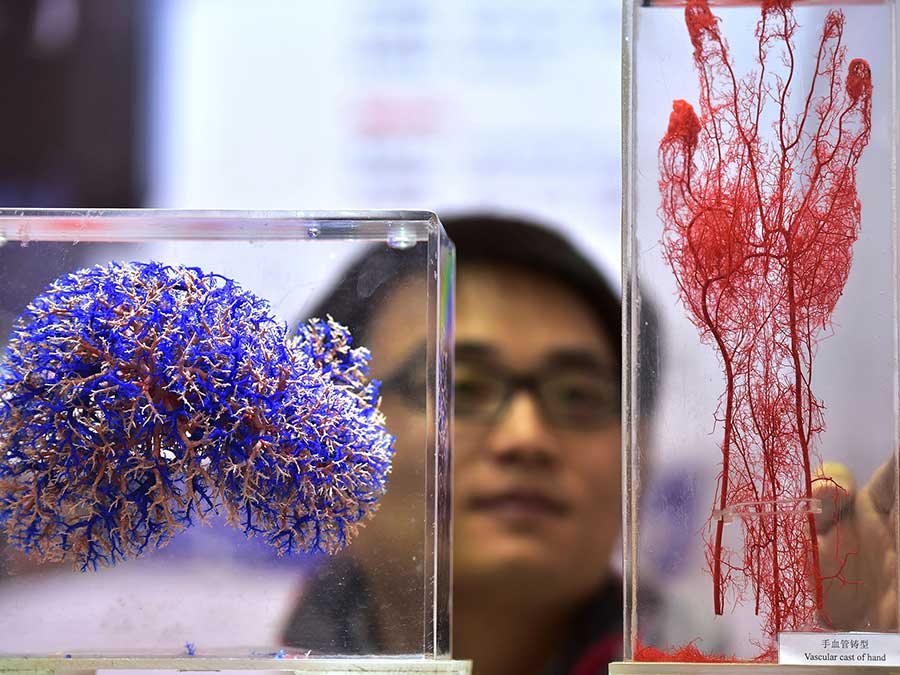WE ARE ALL CYBORGS
We are getting closer to immortality each and every day as bodies can be manufactured with 3D printers 1, transferred to human beings from animals, and kept outside the body 2. Today we have machines invented to function just as organs 3. The BioBag experiment, which resulted in the birth of a healthy lamb 4, has quickened the pulse of the scientific world.
While the prospective innovative developments come to fruition, our inward exploration continues. For instance, treatment and advanced human studies have taken a completely different direction since we have found out the fact that our intestines to be our second brain 5.
Wearable technologies have long been on our agenda. Thanks to the implantable chips and smart tattoos printed on the body, we also became a part of the Internet of things revolution. Every one of us has a potential ''cyborg'' hidden within. Half-human-half-machine lives are among the standards of the near future.
1 THREE DIMENSIONAL LIFE
 In the early 2000s, bioprinting technology began to evolve when inkjet printer heads were discovered to be capable of sputtering live cells without damaging them. It has been found that this technique can be used to repair various organ and bone tissues through the blood vessels. In the future it is expected that living human organ can be produced with this method.
In the early 2000s, bioprinting technology began to evolve when inkjet printer heads were discovered to be capable of sputtering live cells without damaging them. It has been found that this technique can be used to repair various organ and bone tissues through the blood vessels. In the future it is expected that living human organ can be produced with this method.
Almost all objects from machine parts to shoes can be printed with three-dimensional printers. In parallel, the organ printing technology is rapidly advancing. "Bionic skin" that gives robots a sense of touch, a replica of living tissues and human heart, are just a few of what 3D printers can manufacture.
2 ORGANS FREE-OF-BODY

While the donor number increases daily, intensive studies continue on organ transplantation. Thanks to the technology developed by TransMedics, the organs can now be kept working outside the body until they are transplanted to another person. The hearts placed in a box continue to beat, lungs to respire, and kidneys to produce urine.
PROJECT DETAIL3 SMART LUNG
The wearable technology industry sets off its studies on lungs as we discover the effects of respiration style on the quality of our life. BreathResearch's wearable device measures body values through converting the airwaves into sound waves and offers personalized recommendations for a better quality of life. Kaist and Alpha Szenszor breath analysis are blazing a trail into the medical field thereby diagnosing various types of diseases from diabetes to cancer.
4 ARTIFICIAL SAC

Scientists were able to grow lambs into artificial wombs. In a study conducted at the Philadelphia Children's Hospital, a medium was created to mimic the mother's womb. Growth process has been followed by means of placing a lamb embryo in this artificial sac: Biobag. All the internal organs and brains of the lamb have developed in the sac where the heat and the internal plasma were constantly kept under control. The aim of the study is to help complete the development of premature infants.
5 SECOND BRAIN

Did you know that the number of cells contained in the stomach and intestinal neuron network is equal to that of a brain of a cat? The effects of the digestive system on the brain functions continue to be explored rapidly; study results such as severe reduction in behavioral disorders in mice with healthy intestinal flora supplemented with probiotics or autism patients whose symptoms are significantly reduced only when the diet is changed are changing the future of the healthcare industry.
